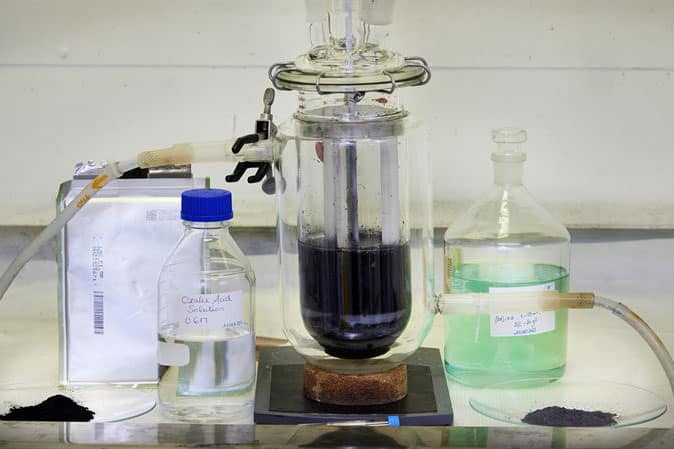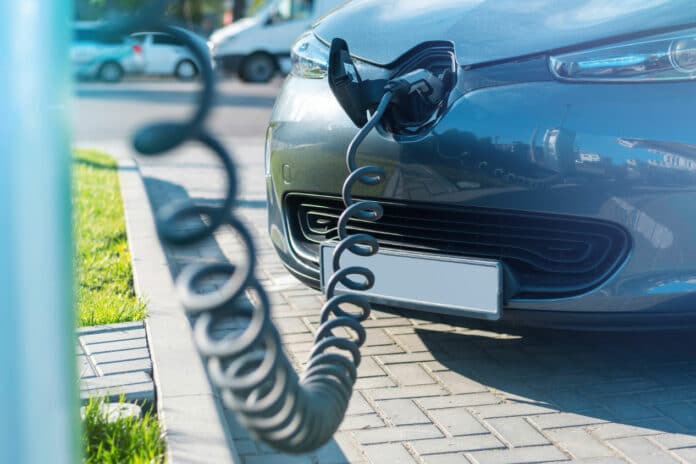The necessity of a feasible process for the recycling of lithium-ion batteries is nowadays evident due to the significant demand for raw materials for battery production, but also due to legislative requirements to achieve specific recycling efficiency with sufficient quality of the products.
Special conditions to achieve high lithium recovery and its use in new batteries represent a challenge for a commercial hydrometallurgical approach. Chalmers University of Technology researchers in Sweden are outlining a novel and effective technique for recycling metals from used electric vehicle batteries.
This technique can recover electric car batteries’ whole lithium and aluminum content. The loss of priceless raw resources like nickel, cobalt, and manganese is minimized simultaneously. The researchers use oxalic acid, an organic acid in the plant kingdom. Therefore, no expensive or dangerous chemicals are needed in the procedure.
Léa Rouquette, a Ph.D. student at the Department of Chemistry and Chemical Engineering at Chalmers, said, “So far, no one has found the right conditions for separating this much lithium using oxalic acid while removing all the aluminum. Since all batteries contain aluminum, we need to be able to remove it without losing the other metals.”

The fume cupboard in the lab contains the pulverized contents of used automobile battery cells. Oxalic acid, a clear liquid, is dissolved in a finely powdered black powder for this. Scientists create the liquid and powder in a device resembling a kitchen mixer. Although it seems as simple as making coffee, the precise method is a novel and just recently reported scientific advance. Scientists have developed a fascinating new method for employing oxalic acid. This environmentally favorable substance can be found in plants like rhubarb and spinach by precisely adjusting temperature, concentration, and time.
Martina Petranikova, Associate Professor at Chalmers’s Department of Chemistry and Chemical Engineering, said, “We need alternatives to inorganic chemicals. One of the biggest bottlenecks in today’s processes is removing residual materials like aluminium. This is an innovative method that can offer the recycling industry new alternatives and help solve problems that hinder development.”
The process of recycling using water is known as hydrometallurgy. All of the metals in an EV battery cell are dissolved in an inorganic acid in classical hydrometallurgy. The “impurities” like copper and aluminum are then removed. Finally, you can recover precious metals, including cobalt, nickel, manganese, and lithium.
Even if there is only a small quantity of residual copper and aluminum, the purification process must go through numerous stages, and each one can result in lithium loss. With the new technique, scientists recover the lithium and aluminum first; then they reverse the order. They can reduce the waste of precious metals needed to produce new batteries.
When the black mixture is filtered, the procedure’s last step is similar to making coffee. The other metals are left in the “solids,” while lithium and aluminum are in the liquid. The procedure then moves on to the separation of lithium and aluminum.
Rouquette said, “Since the metals have very different properties, we don’t think it’ll be hard to separate them. Our method is a promising new route for battery recycling that warrants further exploration.”
Petranikova said, “As the method can be scaled up, we hope it can be used in industry in future years.”
Journal Reference:
- Léa M.J. Rouquette, Martina Petranikova, Nathália Vieceli et al. Complete and selective recovery of lithium from EV lithium-ion batteries: Modeling and optimization using oxalic acid as a leaching agent. Separation and Purification Technology. DOI: 10.1016/j.seppur.2023.124143
